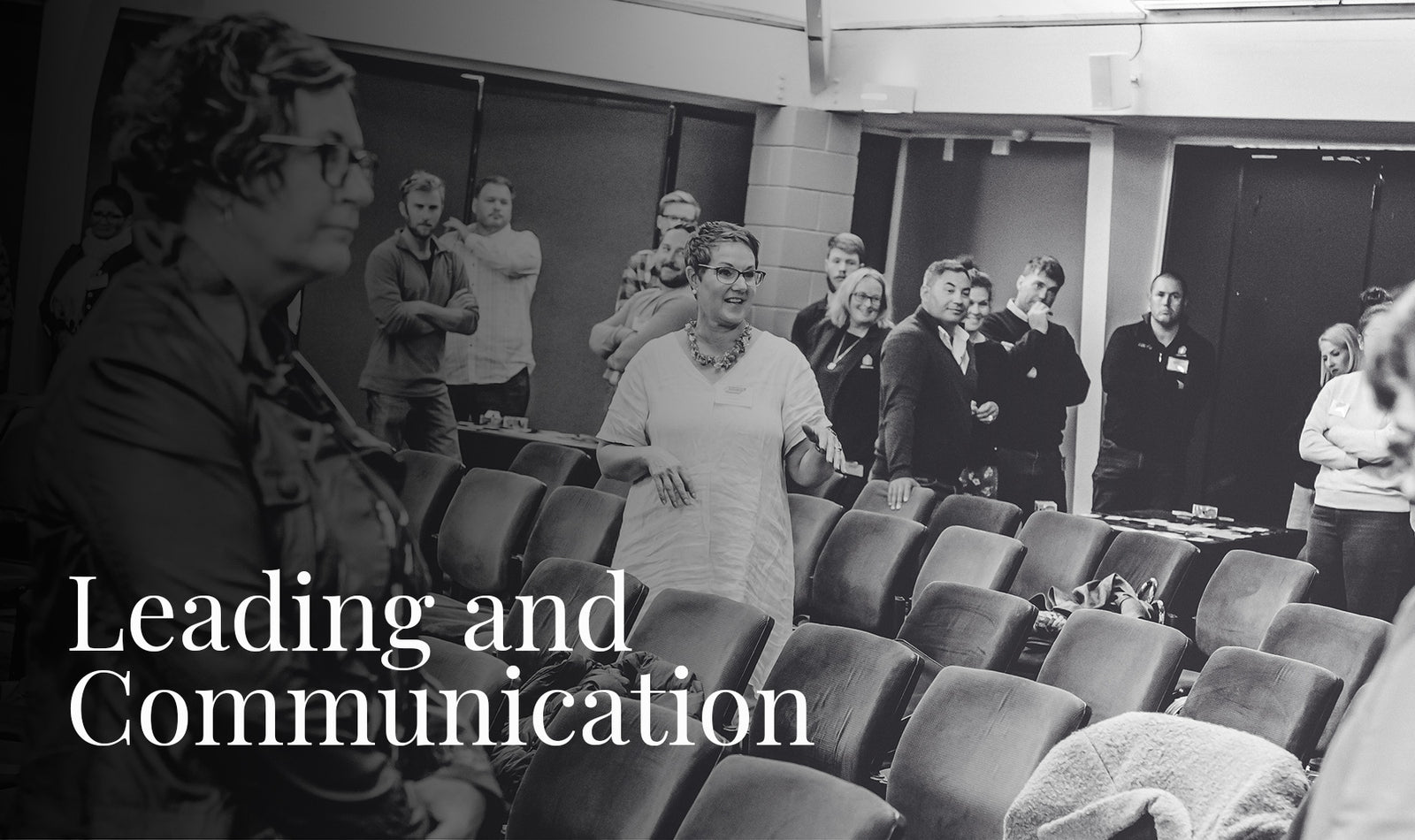
Allan Leighton has led some of the biggest retail organisations in the UK as chairman of the COOP, Asda, Selfridges and Royal Mail.
Have a squiz at this video where he talks about the execution of strategy.
It’s so true! Allan talks about those within your organisations who make ‘treacle’; rather than communicating and empowering, strategy gets fed down through either someone he refers to as ‘permafrost’ i.e., nothing ever goes past or through them, or, probably my favourite, ‘business prevention squads’. These are the middle managers who ensure that they control every piece of information that comes from the top, putting their personal spin on it. Anything to contain and support status quo. Path of least resistance and all of that.
I see this often in organisations where the intent of the leader, never gets passed the ELT or SLT. It’s ‘interpreted’, made into something that is easier for the manager to implement, and those below, believe that the CE is a plonker. Not only does it get a good dose of ‘interpreting through the senior leaders’, but that intent and passion behind the vision is stripped out, and reinterpreted through every level of manager. Each adding their own bias, ensuring, their world is easier. Sometimes, it’s not even purposeful bias, sometimes it’s subliminal bias based on their experience, history and beliefs.
What does this means for us? When a leader communicates, theirs should be the voice that is seen and heard at all levels of the organisation; and often. Town Hall events where all members of the company can be present, dropping through to smaller more intimate forums, ensuring the commanders’ (leaders’) intent is articulated, heard, and can be respectfully challenged, thus ensuring that supporters and resisters alike, hear the passion and vision from the leader, in person.
Pr. T. Morris from Oxford University has a great model where he is curious about those who resist change at the execution level of strategy.
SupportersSupport Change |
ResistersOppose Change |
|
|
Active (25%) |
These people are vocal about their support for the change Their behaviour actively supports the change |
These people are vocal about their resistance for the change Their behaviour actively resists the change |
|
Passive (75%) |
Undecided or unarticulated support Are neither actively vocal nor does their actions indicate alignment |
Have decided they do not support the change but are silent, passive or manipulative in their opposition Can be the most influential as they do not allow leaders to answer questions; they have assumed, imagined, or lead quietly, conspiracy theories |
His data shows that only about 25% of people will be active supporters or resisters. Thus the 75% are where your quick wins lie, and your main body of work will be; introducing changes or executing strategy having engaged the passive supporters and inspired the passive resisters.
If you’ve led change, or are trying to execute strategy, where have you spent the most time? Dealing with the minority of verbose resisters? What strategies did you use to inspire positive engagement and participation? Did the change even embed?
Acknowledging that active resisters are a minority, perhaps we could engage them through providing an active implementation role where their expertise and experience would add value. Where they are recognised for their efforts.
Of course, we could cut off their heads and dispose of their bodies, which, I admit, I rather like. Generally, and genuinely, this is only after our heartfelt effort to educate, engage and inspire them; to lead them to understand the benefit of the change or strategy execution. That said, only so much energy and effort can be justified on a minority, and I do have lots of land, lime and a shovel. Just call me if needs be. I understand it’s pretty difficult to dispose of bodies in the city, based on my experience, all the concrete, too many witnesses and all that.
Pr. Morris also engages us with his three stages of change, closely aligned with the implementation of strategy.
- Stage one, OPEN | being the now.
Where there is often open dissatisfaction, or fiscal trends, events or revelations that lead leaders to assess how things could improve. We explore the purpose of the change, explore how it would feel once the change is achieved, and how it would affect the various parts of the team. This can include very open discussion at all levels of the organisation to seek/survey current feelings, data, trends, beliefs and culture. - Stage two, READY | is the defining of the purpose and the need for change.
It’s articulated into a ‘story’ for telling. This is where the leader would ensure their story is told, top to bottom, using a range of communication tools and events. No interpretation can occur if the leader leads this. Focus is on specifics such as how would we develop the new mindset needed, what competencies will we need, do we have, what are our gaps; what will be the skills process required for the new (if any) change, and what behaviours will we need to embed for the change to occur? At this time, Morris suggests we choose our Model for Leading Change. Kurt Lewin’s 3 Step Model is a lovely simple model which I am using for the future sale of my companies (oh, oh, out of the bag – more at a later date on that); or J Kotter’s 2007 8 Step Model has a more holistic model for larger organisations. - Stage three, COMMITTED
Here Morris has us check the structures are in place with their supporting processes, the correct people are in place with the correct incentives, and followers are fully engaged with resisters and passive supporters motivated to engage, or heads have been cut off. We must also ensure the feedback loops are well defined and set up in this phase, with the mindset to learn and adapt continuously embedded as the mindset for moving forward.
Whatever we do in our business, the dimensions of implementing strategy and, by default, change will always include checking against the value, beliefs and attitudes of our team. Seeking alignment, understanding what is truly important to your people, articulating and embedding the behaviours and associated values for how we relate to each other, our clients and stakeholders.
Behaviours and tasks should have attention; the ‘how do we carry out our roles’, ‘how do we work together’, ‘how do we interact’, leading to a broader assumption of what is right and wrong within our organisation. If this isn’t well determined, we will see misalignment, mistrust, and no accountability for doing the right thing.
Underlying processes, structures and systems that allow your business to operate must be defined, agreed upon and communicated articulately. These are the things that define, facilitate and control work and workflow, provide checks for performance, and enable information to flow both vertically (bi-directional) and horizontally. Structures allocate people and roles, define hierarchies of authority and how each department relates to each other. They also define resources and the locations we use.
My observations from my recent learnings are that execution of strategy is so much more than the writing of strategy. Companies and businesses have had a bias for writing strategy, but generally fail to achieve the growth and change they desired because the implementation and execution failed in part, or in whole.
I’ll leave you with a good read for why we revert to our old ways when we have attempted to deliver and execute new strategy.
When Your Team Reverts to the Old Strategy (hbr.org)
So much of this is about culture and if I bring you back to my topic of passion and expertise, the neuroscience of peak performance; if we articulate at the leading edge of strategy implementation and execution (or change), the biological response to the forthcoming stress and discomfort of change, we will have a team far more capable of resilience, innovation and acceptance of the discomfort that will always occur when we are deviating from our norm.
Call me if you’d like to chat about change process or strategy implementation; we can chat about Execution Foreplay (Now there’s a book I’d like to write!). We’ll talk about how we can prime your team for the change, get them physiologically and mentally set for the process and have them maintain peak performance during a confronting and challenging time. It’s possible, because it’s been done before, and I get a kick out of being part of it.



